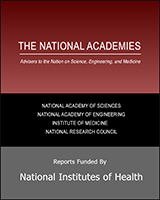NCBI Bookshelf. A service of the National Library of Medicine, National Institutes of Health.
Excerpt
The Board on Children, Youth, and Families (BCYF) of the Institute of Medicine and the National Research Council (NRC) has organized a series of planning meetings, workshops, and consensus studies over the past decade that address different facets of adolescent health and development (see www.bocyf.org). One focus of this work involves threats to adolescent health and well-being that inhere in young people’s inclination to engage in risky and reckless behavior. The board has found considerable evidence that the greatest contributors to morbidity and mortality in adolescence are not disease and illness, but instead such behaviors as unsafe driving; experimentation with alcohol, tobacco, and illicit drugs; involvement in crime; and unsafe sex.
Although significant progress has occurred in the study of adolescent risk-taking, the board observed that findings from this body of work had not been integrated across disciplines (e.g., neuroscience, psychology, sociology, public health) or risk domains (e.g., substance use, sexual risk-taking, delinquency). The board further thought that prevention and health promotion efforts would be informed by a systematic examination of current theory and research on adolescent risk-taking that drew on contributions from multiple disciplines and that focused on different risk behaviors.
The first of the three workshops convened by the Committee on the Science of Adolescence focused on the prevalence and nature of adolescent risk-taking and on the potential contributions of the neural, biological, intellectual, and socioemotional developments characteristic of adolescence. The second workshop examined interpersonal, institutional, and contextual influences on adolescent risk behavior. The final workshop integrated lessons learned from the previous two workshops, combining the prior emphases on individual and contextual influences and examining the potential implications of this work for policy and practice.
Contents
This study was supported by Award No. HHSP23320042509XI and N01-OD-4-2139, TO 211 between the National Academy of Sciences and the Administration for Children and Families (ACF) and the National Institute on Drug Abuse (NIDA), within the Department of Health and Human Services.
Suggested citation:
IOM (Institute of Medicine) and NRC (National Research Council). 2011. The Science of Adolescent Risk-Taking: Workshop Report. Committee on the Science of Adolescence. Washington, DC: The National Academies Press.
Any opinions, findings, conclusions, or recommendations expressed in this publication are those of the author(s) and do not necessarily reflect the views of the organizations or agencies that provided support for the project.
NOTICE: The project that is the subject of this report was approved by the Governing Board of the National Research Council, whose members are drawn from the councils of the National Academy of Sciences, the National Academy of Engineering, and the Institute of Medicine. The members of the committee responsible for the report were chosen for their special competences and with regard for appropriate balance.
- NLM CatalogRelated NLM Catalog Entries
- The Science of Adolescent Risk-Taking: Workshop ReportThe Science of Adolescent Risk-Taking: Workshop Report
- Recurrent Lymphocyte-Rich Classic Hodgkin LymphomaRecurrent Lymphocyte-Rich Classic Hodgkin LymphomaMedGen
- Recurrent Classic Hodgkin LymphomaRecurrent Classic Hodgkin LymphomaMedGen
- LOC130264857 [Oenanthe melanoleuca]LOC130264857 [Oenanthe melanoleuca]Gene ID:130264857Gene
- Recurrent Lymphocyte-Depleted Classic Hodgkin LymphomaRecurrent Lymphocyte-Depleted Classic Hodgkin LymphomaMedGen
Your browsing activity is empty.
Activity recording is turned off.
See more...
